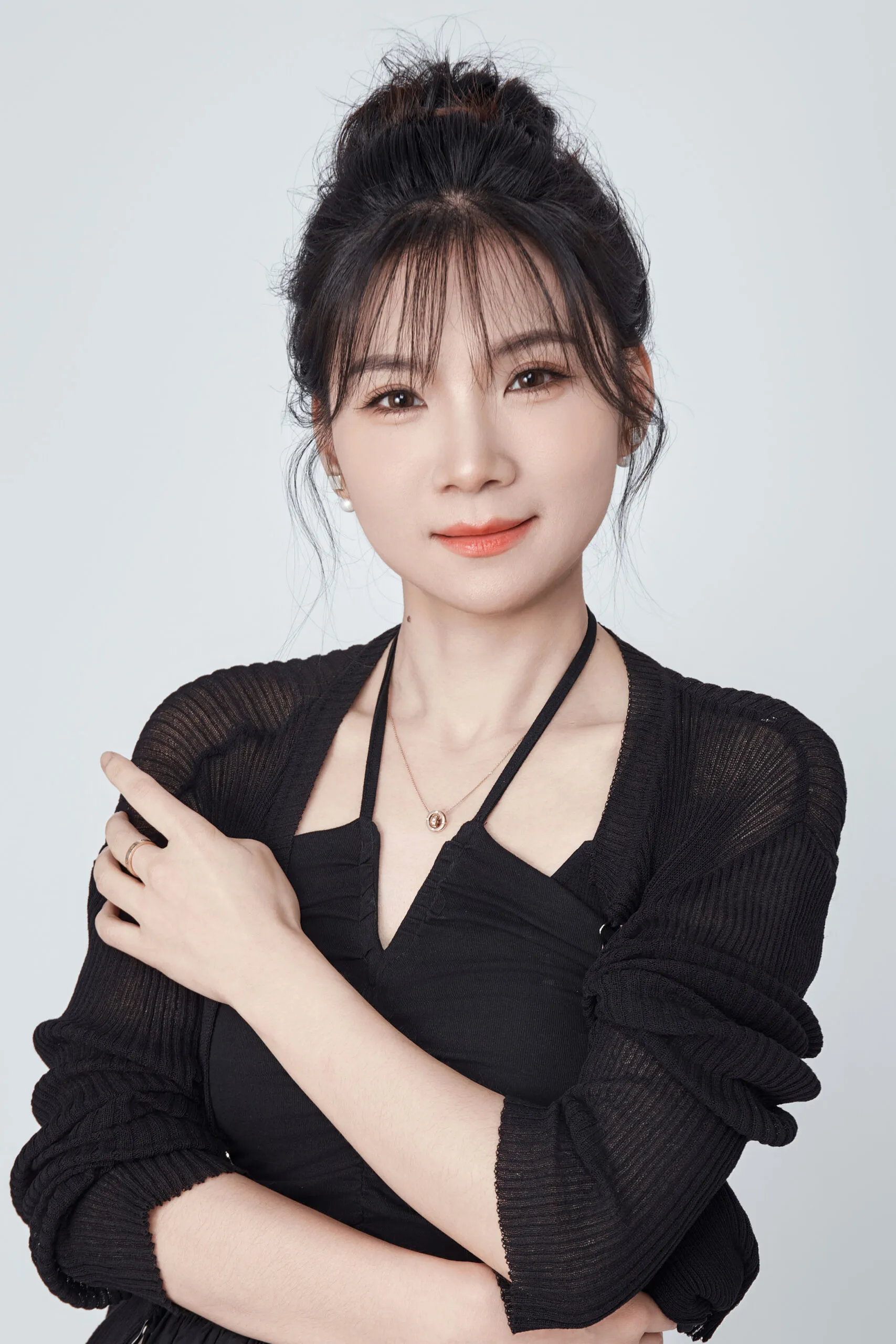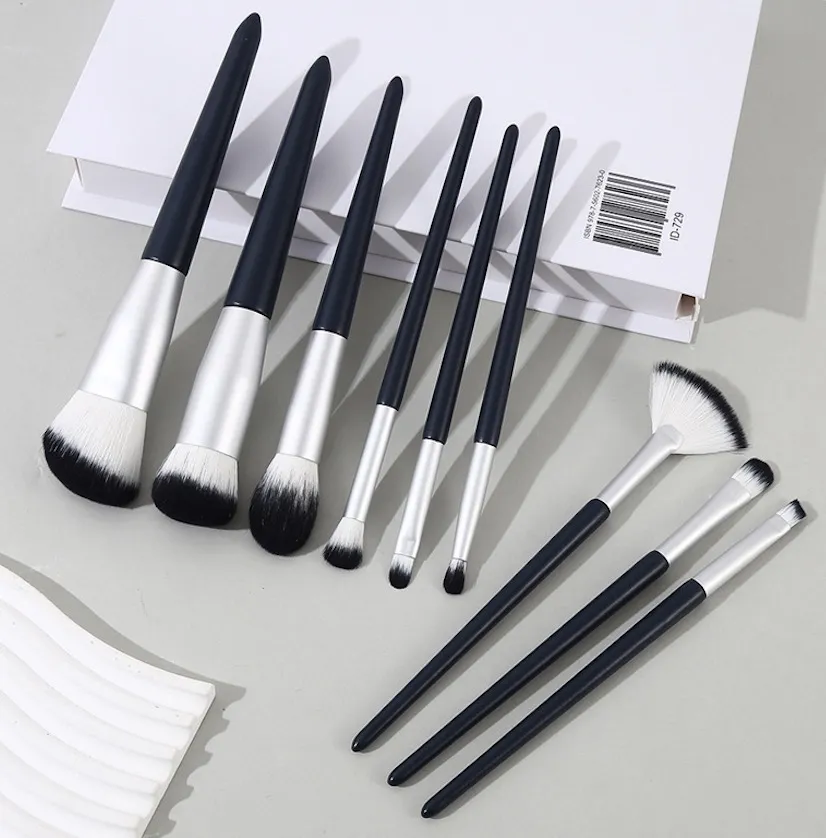Struggling to find the real origin of your favorite IT Cosmetics brushes? The packaging is vague, and the website is silent. Here’s the answer you’ve been looking for.
The short answer is that most IT Cosmetics makeup brushes are made in China. While the brand focuses on its high-performance, cruelty-free synthetic materials1, evidence from consumer packaging and online Q&As consistently points to Chinese manufacturing for its most popular lines, like the Heavenly Luxe collection.
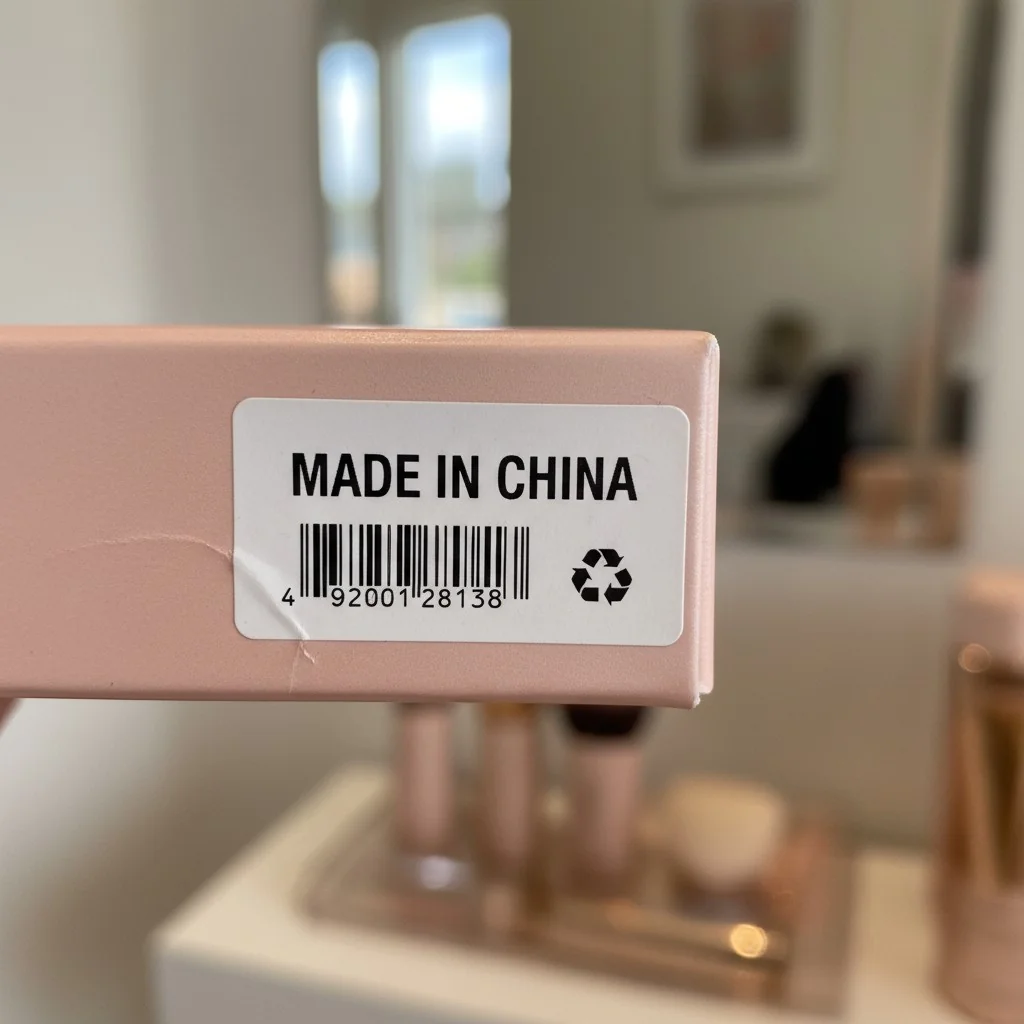
As a brand owner, you know that your supply chain tells a story. You want to understand how a major player like IT Cosmetics manages its production. They are famous for quality, but they are also very quiet about their manufacturing origins. This isn’t an accident. It’s a deliberate strategy that many large beauty brands use. Let’s break down how they do it and what it means for your own brand.
All IT Cosmetics brushes are manufactured in the United States.False
While IT Cosmetics is a US-based brand, overwhelming evidence from packaging and consumer reports indicates that the brushes are manufactured in China.
IT Cosmetics is owned by the L’Oréal Group.True
L’Oréal acquired IT Cosmetics in 2016 for $1.2 billion, integrating it into its Luxe Division. This acquisition placed IT's sourcing under L'Oréal's global procurement framework.
Why is IT Cosmetics so quiet about where their brushes are made?
Your brand’s story is everything, but big brands often hide parts of their story. They worry that certain details might hurt their premium image. This is why they use "strategic ambiguity2."
This means the brand intentionally avoids discussing the country of origin. Instead, IT Cosmetics focuses its marketing on things like "pro-hygienic," "cruelty-free," and "award-winning" synthetic fibers. This is a common playbook for prestige brands that rely on a globalized supply chain to manage costs and scale.
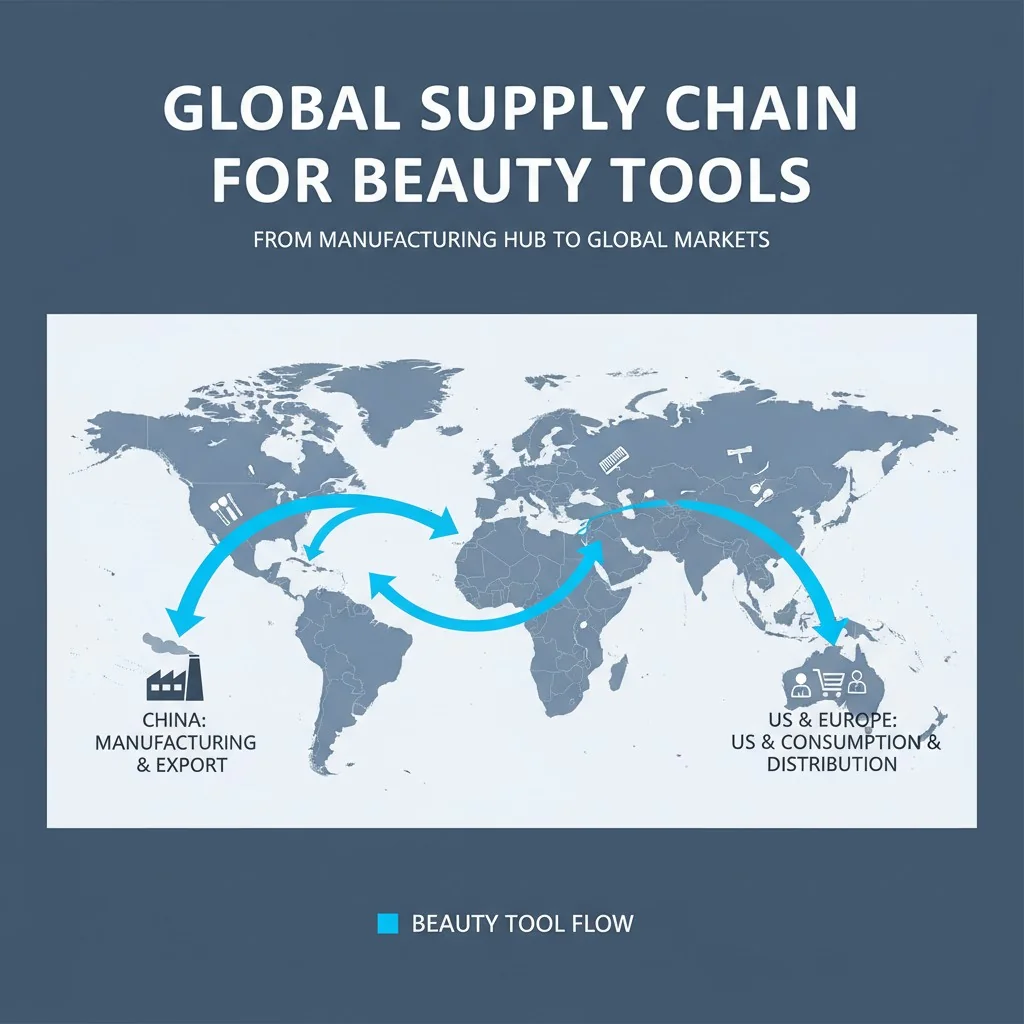
In my years running a brush factory, I’ve seen this firsthand. A brand will send us incredibly detailed specifications for everything from the fiber density to the type of glue used in the ferrule. They control the quality at a micro-level. But when it comes to marketing, they talk about the brand’s vision, not the factory’s location. This creates a gap between the premium marketing story and the manufacturing reality. For IT Cosmetics, this allows them to leverage China’s advanced synthetic brush manufacturing capabilities while maintaining a luxury American brand identity.
The Brand’s Focus vs. The Physical Evidence
| What the Brand Emphasizes | What the Evidence Shows |
|---|---|
| Cruelty-free, synthetic fibers | "Made in China" on packaging |
| Developed with plastic surgeons | Sourced via L’Oréal’s global network |
| Performance and skin benefits | Standard for prestige synthetic brushes |
| Brand story and founder’s mission | COO is not a marketing priority |
This strategy works because, for many consumers, performance is what matters most. The Heavenly Luxe line is praised for its softness and durability, proving that the country of origin doesn’t determine quality—the brand’s quality assurance (QA) standards do.
Country of origin is the most important factor for makeup brush quality.False
Quality is determined by material specifications, manufacturing processes, and quality control standards set by the brand, not the geographical location of the factory.
IT Cosmetics often omits Country of Origin (COO) information on its official website product pages.True
This is a common practice for brands using 'strategic ambiguity.' The information is usually found on the physical packaging as required by import/export laws.
How does L’Oréal’s ownership affect where the brushes are made?
Wondering how a huge company like L’Oréal changes things? When a brand gets acquired, its entire operational playbook can be rewritten. This is exactly what happened with IT Cosmetics.
Since L’Oréal acquired IT Cosmetics in 2016, the brand’s sourcing and manufacturing have been integrated into L’Oréal’s massive global procurement system. This means decisions are no longer made by a smaller, independent company. Instead, they are part of a global strategy designed to optimize costs, ensure supply chain stability, and maintain consistent quality across millions of units.
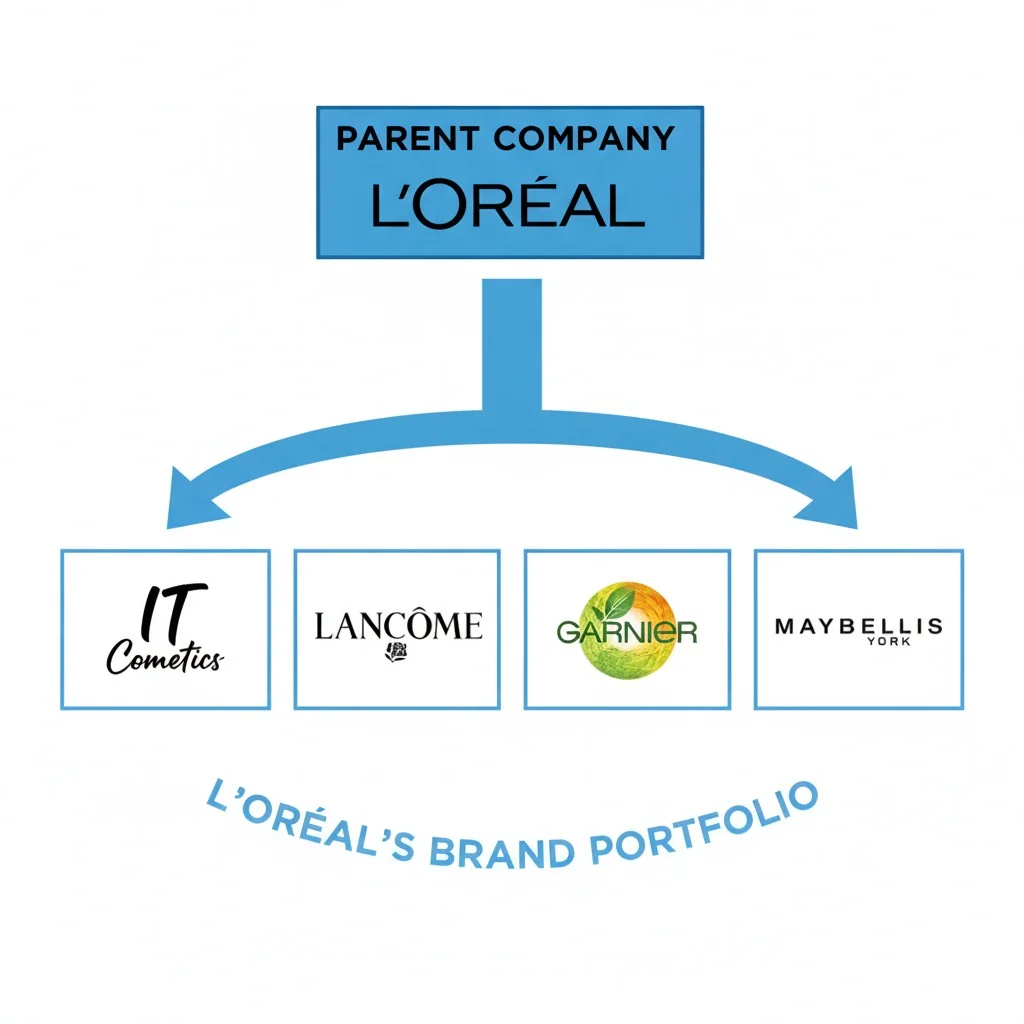
I’ve worked with brands that were acquired by larger corporations, and the shift is immediate. The focus turns to efficiency and risk management. A parent company like L’Oréal has relationships with dozens of top-tier factories around the world. This gives them incredible flexibility.
The L’Oréal Effect on Sourcing
- Multi-Vendor Strategy: L’Oréal doesn’t rely on a single factory or even a single country. They can split production for the same brush line across different suppliers to prevent delays and negotiate better prices. This is why one batch of a brush might be made in one factory, and the next batch somewhere else.
- Tiered Liability: The corporate structure creates a shield. L’Oréal, the parent company, owns the IT Cosmetics brand. The brand then works with regional distribution partners (like Ulta), who in turn place orders with third-party manufacturers. This separation makes it difficult for consumers to trace the exact origin.
- Retailer Exclusives: This structure also makes it easy to create exclusive lines, like "IT Brushes for ULTA." These can be produced by a dedicated supplier that meets L’Oréal’s quality standards but is managed separately from the main line.
For a brand founder, this is a masterclass in scaling. L’Oréal’s system allows IT Cosmetics to operate with agility, protecting the brand from supply chain disruptions while keeping the manufacturing details away from the public eye.
L'Oréal's acquisition of IT Cosmetics simplified its supply chain.False
The acquisition integrated IT Cosmetics into a more complex, global, and multi-vendor procurement framework, which increases flexibility but reduces transparency at the consumer level.
Retailer-exclusive lines like 'IT Brushes for ULTA' may be produced by different suppliers than the main line.True
This is a common practice within large brand portfolios to manage capacity, cost, and retailer relationships, while still adhering to the brand's overall quality control standards.
Where is the evidence that the brushes are made in China?
You’re a strategic founder, so you need proof, not just theories. The evidence for Chinese manufacturing isn’t on the IT Cosmetics website. It’s found in the places where real customers talk: online reviews and Q&A sections.
The most compelling evidence comes directly from consumers who have the product in their hands. On retail sites like Amazon, Ulta, and Sephora, customers frequently ask, "Where is this brush made?" The answers, often accompanied by photos of the packaging, consistently point to one place.
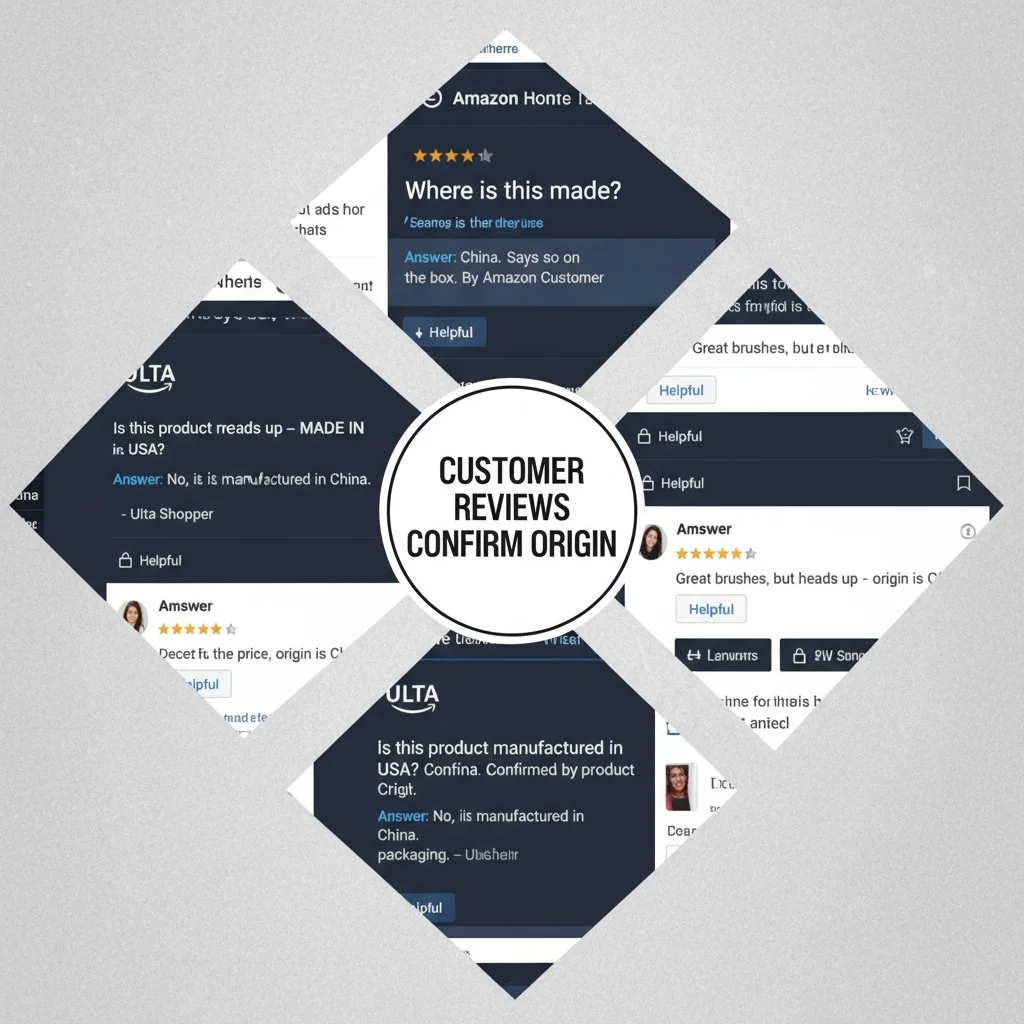
I tell my clients to do this kind of research all the time. It’s digital gold. You get to see what real buyers care about and uncover details the brand doesn’t advertise. For IT Cosmetics, the pattern is undeniable.
Following the Digital Trail
- Iconic SKUs: Look up the most famous brushes, like the Heavenly Luxe Complexion Perfection Brush #7. In the Q&A sections on Amazon and Ulta, you will find multiple buyers confirming the "Made in China" label on the box or the brush’s ferrule sticker.
- Unboxing Videos: YouTube and TikTok are full of unboxing videos. In many of these, you can pause the video and see the packaging details clearly. This user-generated content often reveals what official product pages hide.
- The "White-Label" Dynamic: While IT Cosmetics isn’t a white-label brand, the manufacturing principle is similar. The world’s most advanced factories for synthetic makeup brushes are located in China. They produce for everyone, from mass-market brands to luxury players. The quality difference comes from the specs and QA demanded by the brand, not the factory’s address.
Many brand owners I work with initially have a negative perception of "Made in China." But after they tour a modern facility or receive their first high-quality samples, they understand. The innovation in synthetic fiber technology and automated assembly is happening there. IT Cosmetics leverages this, and the proof is in the hands of their customers.
IT Cosmetics officially states on its website that all its brushes are made in China.False
The brand does not centrally disclose this information. The evidence is found on a SKU-by-SKU basis through consumer-provided photos and Q&A on retail websites.
China is home to many of the world's most advanced synthetic makeup brush manufacturers.True
The country has a highly developed ecosystem for beauty tool manufacturing, offering scale, technological innovation, and cost-efficiency that attracts brands from all price points, including luxury.
What can your D2C brand learn from IT Cosmetics’ strategy?
So, what does this all mean for you, a founder building your own beauty brand? IT Cosmetics provides a powerful blueprint for success, but you can also learn from their lack of transparency.
The key takeaway is that you can achieve premium quality with a Chinese manufacturing partner. The "Made in China" label does not mean "low quality." It means you have access to world-class technology, provided you manage the process correctly.
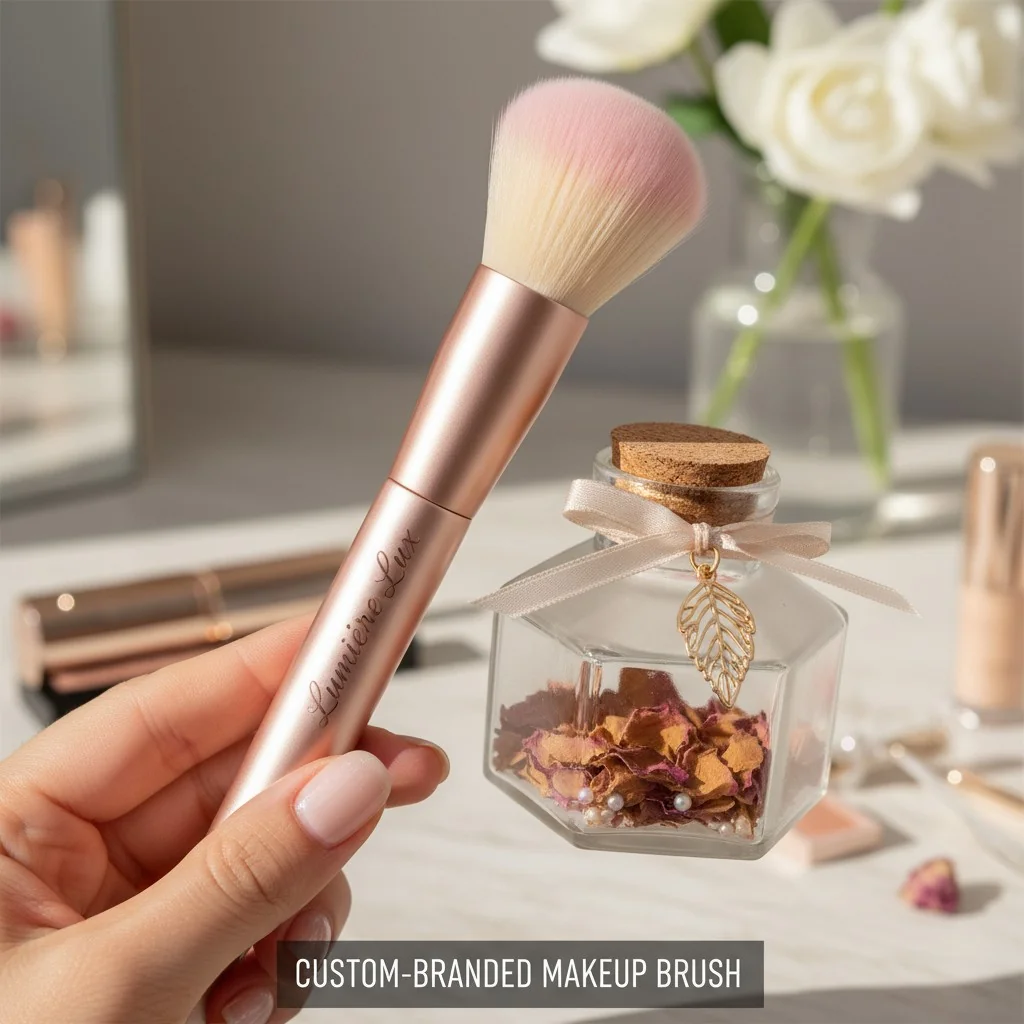
Unlike a giant like L’Oréal, you have the advantage of being nimble and transparent. You can build a brand story that celebrates your sourcing choices3 instead of hiding them. This is a huge opportunity to connect with today’s conscious consumers.
Strategic Takeaways for Your Brand
- Own Your Sourcing Story: Don’t be afraid of "Made in China." Instead, be transparent about it. Talk about why you chose your factory. Did you pick them for their expertise in vegan fibers? Their ethical labor practices? Their commitment to quality? Turn your sourcing into a point of pride.
- Focus on QA, Not Just Geography: As we’ve seen with IT Cosmetics, quality is controlled by the brand, not the country. Invest your time in creating a detailed "Quality Standard" document for your supplier. Specify the fiber type, density, cut, ferrule crimping, and handle finish. This is what I help my clients at Brushino do every day. A good supplier will welcome this level of detail.
- Use Transparency as a Differentiator: While IT Cosmetics uses ambiguity, you can use clarity. Get your certifications (like Vegan, Cruelty-Free, FSC) and display them proudly. Share behind-the-scenes content from your production process. This builds trust that big brands can’t easily replicate.
Your brand can offer the same premium feel as IT Cosmetics, but with an honest story that resonates with modern buyers. It’s not about where it’s made; it’s about how it’s made and the values your brand stands for.
Small D2C brands cannot compete with the quality of brushes from major brands like IT Cosmetics.False
Small brands can achieve or exceed the quality of major brands by working with the right OEM/ODM partner and providing strict quality assurance specifications. Many top factories serve both large and small brands.
Transparency about sourcing from China can be a positive marketing tool for a D2C brand.True
By being transparent about ethical and high-quality sourcing, brands can build trust and differentiate themselves from larger, more opaque competitors, appealing to conscious consumers.
Conclusion
Most IT Cosmetics brushes are made in China, a strategic choice managed by L’Oréal. This model prioritizes performance and supply chain agility over transparency, offering key lessons for every D2C brand.
References
-
Explore the advantages of cruelty-free synthetic materials in cosmetics and how they impact consumer choices. ↩
-
Learn about strategic ambiguity and how brands use it to shape consumer perceptions. ↩
-
Learn how sourcing choices can impact brand reputation and consumer loyalty in the beauty industry. ↩

